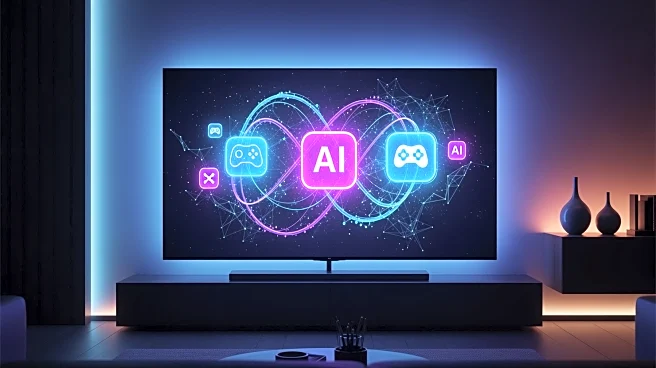What's Happening?
Netflix has announced a new initiative to expand its gaming offerings by introducing a lineup of games that can be played on television screens using a smartphone as a controller. This development includes both new and established games, such as Lego
Party, Boggle Party, Pictionary: Game Night, Tetris Time Warp, and Party Crashers. Additionally, Netflix has unveiled Dead Man's Party: A Knives Out Game, inspired by the Knives Out detective movies. The service also caters to younger audiences with games like Barbie Color Creations, Toca Boca Hair Salon 4, and Paw Patrol Academy. Netflix's president of games, Alain Tascan, emphasized the ease of accessing these games, likening it to streaming shows on the platform.
Why It's Important?
This move by Netflix signifies a strategic expansion into the gaming industry, potentially increasing its subscriber engagement and retention by offering interactive content alongside its streaming services. By integrating games into its platform, Netflix is positioning itself as a versatile entertainment provider, which could attract a broader audience and enhance its competitive edge against other streaming services. The introduction of TV-compatible games also reflects a growing trend of convergence between different media forms, offering users a seamless entertainment experience.
What's Next?
Netflix's gaming expansion may prompt other streaming services to explore similar integrations, potentially leading to increased competition in the gaming sector. As Netflix continues to develop its gaming portfolio, it may seek partnerships with game developers to further diversify its offerings. The success of this initiative could influence Netflix's future content strategy, possibly leading to more interactive and immersive experiences for users.
Beyond the Headlines
The integration of gaming into Netflix's platform raises questions about the future of media consumption and the blending of passive and active entertainment forms. This development could lead to new business models within the streaming industry, where interactive content becomes a standard offering. Additionally, it may impact the gaming industry by providing developers with new distribution channels and audiences.













